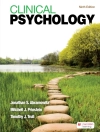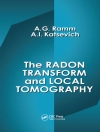There is little doubt that children with gender problems suffer psychologically. But when clinicians are confronted with such cases, they often make controversial choices without the benefit of a substantial knowledge base.
Transgenderism and Intersexuality in Childhood and Adolescence: Making Choices presents an overview of the research, clinical insights, and ethical dilemmas relevant to clinicians who treat intersex youth and their families. Exploring gender development from a cross-cultural perspective, esteemed scholar Peggy T. Cohen-Kettenis and experienced practitioner Friedemann Pfäfflin focus on assessment, diagnosis, and treatment issues. To bridge research and practical application, they include numerous case studies, definitions of relevant terminology, and salient chapter summaries.
Clinically oriented, this comprehensive volume examines
- Gender development, identity, and segregation in sexual and psychosexual differentiation
- Subtypes and multiple theories of atypical gender development
- Evaluation, diagnosis, and intervention techniques for gender identity disorders
- Eligibility issues for reversible, partially reversible, and irreversible sex reassignment intervention
- Legal and ethical guidelines for the clinical management of gender problems in children and adolescents
Transgenderism and Intersexuality in Childhood and Adolescence: Making Choices offers an authoritative examination of sexual, psychosexual, and gender differentiation in children and adolescents. Combining empirical knowledge and in-depth research, the authors supply practitioners with the tools to effectively treat intersex, gender dysphoric, and gender variant youth.
An indispensable resource for mental health, medical, and educational professionals who work with children and adolescents, Transgenderism and Intersexuality in Childhood and Adolescence: Making Choices is also an excellent supplementary text for advanced undergraduate, graduate, and credential students in developmental and clinical psychology, pediatric psychiatry, pediatric nursing, and gender studies courses.
Tabla de materias
Series Editor′s Introduction – Alan E. Kazdin
Preface
Acknowledgments
List of Abbreviations
1. Typical Sexual Differentiation
General Terminology
Sexual Differentiation
Development of Gender Identity and Gender Role
2. Gender Identity Disorder in Childhood and Adolescence
Benefit of Historical and Cross-Cultural Data for Clinical Practice
Cross-Cultural and Historical References (Adults)
Cross-Cultural and Historical References (Children and Adolescents)
3. Atypical Sexual Differentiation
Introduction
Chromosomal/Gonadal Conditions
Female Pseudohermaphroditism
Male Pseudohermaphroditism
Other Conditions
4. Atypical Development of Gender Identity and Gender Role
Specific Terminology
Clinical Picture
Correspondence Between Childhood Gender Identity Disorder and Transsexualism
Prevalence and Sex Ratio of GID
Theories About Atypical Gender Development
5. Clinical Management of Intersex Conditions
Importance of Parent Counseling
Importance of Child Counseling
Neonatal Approach
Information and Support
Criticism of Clinical Policy
6. Clinical Management of Gender Problems in Children
Introduction
Diagnosis
Interventions
7. Clinical Management of Gender Problems in Adolescents
Diagnosis
Interventions
Effects of Sex Reassignment
8. Legal Issues of Intersexuality and Transsexualism
Legal Sex Assignment of Intersexes
Legal Implications of Transsexualism in Adults
Legal Issues of GID in Childhood and Adolescence
References
Name Index
Subject Index
About the Authors
Sobre el autor
Friedemann Pfafflin, M.D., Ph.D., is Professor of Psychotherapy and head of the Forensic Psychotherapy Unit at Ulm University, Germany. Trained as a psychiatrist at Hamburg University, he first engaged in transgender clinical work in the mid-1970s when he visited the Psychohormonal Research Unit and the Gender Identity Clinic at The Johns Hopkins University Clinic in Baltimore, Maryland. From 1978 to 1992, he worked at the Institute of Sex Research at Hamburg University, Germany, and continued the work with transsexuals after moving to Ulm University in 1992. His main areas of research are transsexualism, transgenderism, psychotherapy process research, forensic psychiatry and psychotherapy, and history of psychiatry. From 1995 to 1997, he was President of the Harry Benjamin International Gender Dysphoria Association, Inc. Together with Eli Coleman, he founded The International Journal of Transgenderism in 1997.












